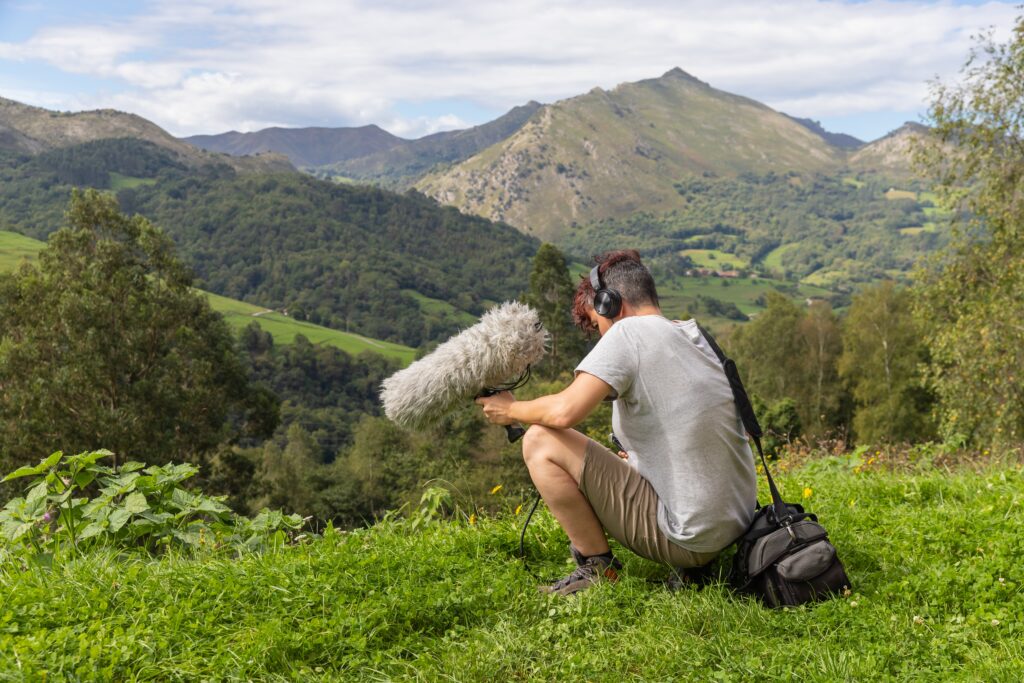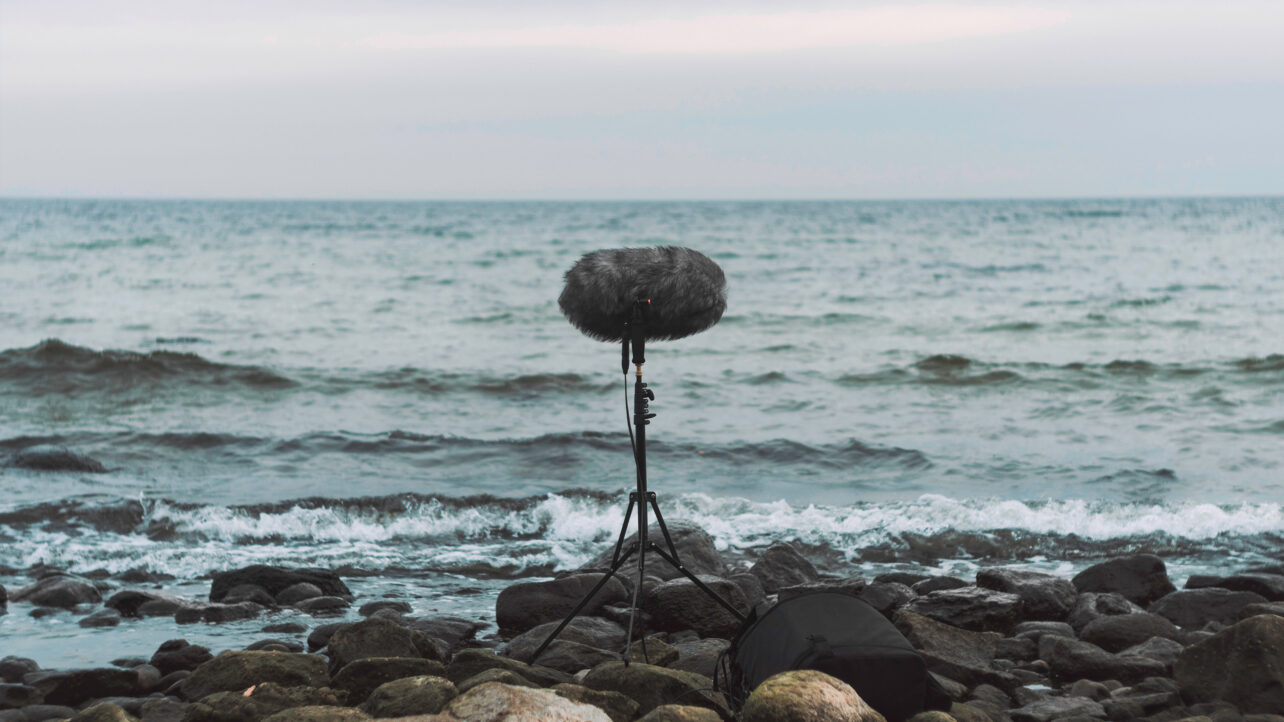The natural sounds of our world can serve as a rich source of inspiration for many creatives. Field recording provides us the means to capture these naturally occurring sounds, which can then be utilized in various domains like filmmaking, music production, or sound design. Are you seeking advice on the necessary equipment or tips for capturing high-quality field recordings? Here’s a beginner’s guide to the fascinating world of field recording, designed to jump-start your creative journey.
What is Field Recording?
Field recording refers to capturing naturally occurring sounds from real-world environments, typically outside a studio setting. The spectrum of sounds found in field recordings is vast, from the ambience of forests and urban environments to any other location emitting intriguing sounds. Unlike in a studio setting where sounds are purposefully crafted, field recordings aim to capture the authentic ambience that defines the unique character of different locations.
Field recordings are widely used in various scenarios, including artistic endeavors, scientific research, and media productions. They can be leveraged in musical projects, often forming the basis for music crafted from recorded soundscapes. Additionally, field recordings are invaluable in sound design, where natural sounds can be manipulated and transformed into something entirely new.
Field recordings are often used in film and TV production to provide ambience. A dedicated sound crew is responsible for capturing soundscapes that complement specific scene locations.
From a scientific perspective, field recordings are beneficial for documenting various environments, thereby significantly contributing to research.
Equipment
So, what equipment do you need for field recording?
The complexity of field recording equipment can vary based on the type of sound you wish to capture. A minimal setup would only require a couple of essential items: an audio recorder and a pair of headphones.
There will be instances where additional equipment may be necessary. This often depends on the purpose of the field recording (e.g., TV and Film), the high-quality standard required, or simply if you have the budget to invest in superior gear.
Below is a list of essential equipment and some optional gear for those seeking to expand their recording capabilities.
Audio Recorder
One of the most crucial, if not the most important, is an audio recorder, often called a field recorder. These are dedicated devices explicitly designed to capture high-quality audio in outdoor settings. Typically, these devices come with built-in stereo microphones, making them perfect portable tools to record any type of sound from the outside world.
For beginner-friendly devices, Tascam is a reputable company offering affordable and easy-to-use audio recorders. A device like the Tascam DR-05X is an ideal choice for beginners. It’s budget-friendly and doesn’t require external microphones.
Another feasible option is to utilize your phone! Although the quality may not be on par with dedicated audio recorders, your phone can still serve the purpose of recording sounds. With a little post-production processing, you can transform these recordings into something remarkable.
For something more upmarket and more versatile, Zoom has a reputable selection of field recorders, such as the Zoom H4n Pro. This nifty device has two extra XLR inputs for external microphones, which may be useful.
Sound Devices also has a stellar collection of field recorders that are widely used in the professional media industry. The Sound Devices MixPre-6 II is a popular choice that’s highly popular for filmmaking, known for its ultra low-noise preamps that can record up to 8 tracks of audio.
All field recorders offer a multitude of recording formats. A recommended starting format for beginners is the 24-bit WAV with a sample rate 44.1kHz. These files will be large at first but can be compressed later, providing high-quality recordings.
Microphones
You might wonder, “Why would I need another microphone when the field recorder already has built-in ones?” An additional microphone can result in more precise recordings, especially for those seeking to capture specific sounds.
Shotgun microphones are popular in field recording due to their high directionality within their polar pattern, designed to pick up sounds directly in front of them. Furthermore, shotgun microphones often deliver superior quality to those built into field recorders. Combining the two can provide significantly more detailed results.
Using only the field recorder is perfectly acceptable and can yield great results. However, supplementing it with additional microphones with specific polar patterns for capturing high-quality sounds can help you achieve even better recordings.
RØDE offers an excellent range of shotgun microphones. The NTG-1, a premium condenser microphone with a full frequency response and low noise, is a popular choice and results in clear, concise recordings.
Wind Protection
Field recordings will mostly occur outdoors, where wind noise can be an issue.
Windshields are designed to nullify any wind noise that might disrupt the recording. They are relatively inexpensive for field recorders and are essential when working outdoors. Using windshields also saves you from the hassle of removing wind noise in post-production, which can often result in unsalvageable audio.
For external microphones, a blimp can be purchased. These devices are designed with a suspension system for superior isolation from unwanted noise. Blimps also feature a shock mount system to minimize unwanted vibrations, making them perfect for outdoor recordings.

Headphones
Another critical piece of gear is headphones. They allow us to hear what’s being recorded, but selecting a type best suited for field recording is important.
Headphones used in field recording should be closed-back for better isolation. Additionally, they should have a relatively flat frequency response. This ensures that no certain frequencies are artificially boosted or reduced, enabling accurate and natural sound production. Most leisure headphones have boosted bass frequencies, which should be avoided in this case.
Stands, Grips, Cables, and Memory Cards
Your handheld field recorder can sometimes pick up vibrations from your movements when recording ambient sounds or outdoor noises. Using a stand can help minimize this, ensuring you only capture the desired sound. This approach is particularly beneficial during long recording sessions.
If you plan to record while walking, a microphone holder, also known as a pistol grip, is incredibly useful for reducing vibrations. As mentioned, blimps often come equipped with shock mounts and pistol grips. Additionally, blimps usually include a cable designed to minimize vibration transference.
Using external microphones requires dealing with cables. Keeping spare XLR cables of varying lengths on hand is a good idea to cover all possible situations.
Field recording often involves lengthy recording sessions. Working with formats such as WAV results in larger file sizes than MP3. Ensure you have an appropriately sized SD memory card to accommodate the number of recordings you plan to make. It’s also wise to keep a spare memory card on hand in case of any unexpected issues, like a malfunctioning or lost card (especially given how small they are!).
Audio Editing Software
Now we have covered the physical equipment, let’s not forget the software. Audio editing software is essential as this is where you can crop, enhance and edit to your heart’s desire. Depending on your work type, you can get free software such as Audacity, or paid software.
If you are working with video, software like Adobe Audition is great for editing field recordings. Audition has extensive tools that align with filmmaking to edit your field recordings. For musical purposes, software like Ableton Live and Reaper are well-designed DAWs with a wide range of audio editing tools and sound design options. You can also edit audio for free using Garageband if you are an Apple user.
To edit field recordings, the primary tools you will need are an Equaliser (EQ), noise reduction, and compression. These help clear up any unwanted sounds in addition to enhancing them. Most DAWs or NLEs will have these tools already included.
Planning Your Field Recording
Before venturing into the field, it’s advisable to have a plan. Proceeding without a clear strategy might not produce the best results, as you may fail to bring the necessary equipment or find yourself in less-than-ideal weather conditions.
A clear and concise plan makes recording sessions more productive and organized, resulting in a better collection of sounds. Begin by making a list of sounds you want to capture and scouting potential locations; this preparation can ensure a smoother workflow when you’re out in the field.
Setting Gain Levels
When the time finally comes to record, setting your gain levels correctly is crucial. The microphones might not capture all the quieter sounds if the levels are too low. On the other hand, excessively high levels can result in distortion, compromising the audio quality.
When recording outdoor sounds, it’s advisable first to test the sound you’re going to record, ensuring that the peak on the level meter sits around -12dB. This provides enough headroom for subsequent editing and minimizes the risk of distortion.
While this is just a recommendation, it isn’t a one-size-fits-all case. Whatever level of expertise you have with field recording, it’s important to trust your ears. This may require some experimentation with the gain levels, but ensuring you listen carefully to the environment and what sounds good to you is part of the process of finding the optimal level for your sound recordings.
All recording scenarios are different, there will be times when the gain may be too low, and you will need to raise it or vice versa. Field recording requires a lot of patience, so don’t beat yourself up if those initial recordings aren’t what you expected. It’s all part of the learning process!
For more on audio, check out these articles:
Ableton Live vs. Logic Pro: Which is the better DAW?

